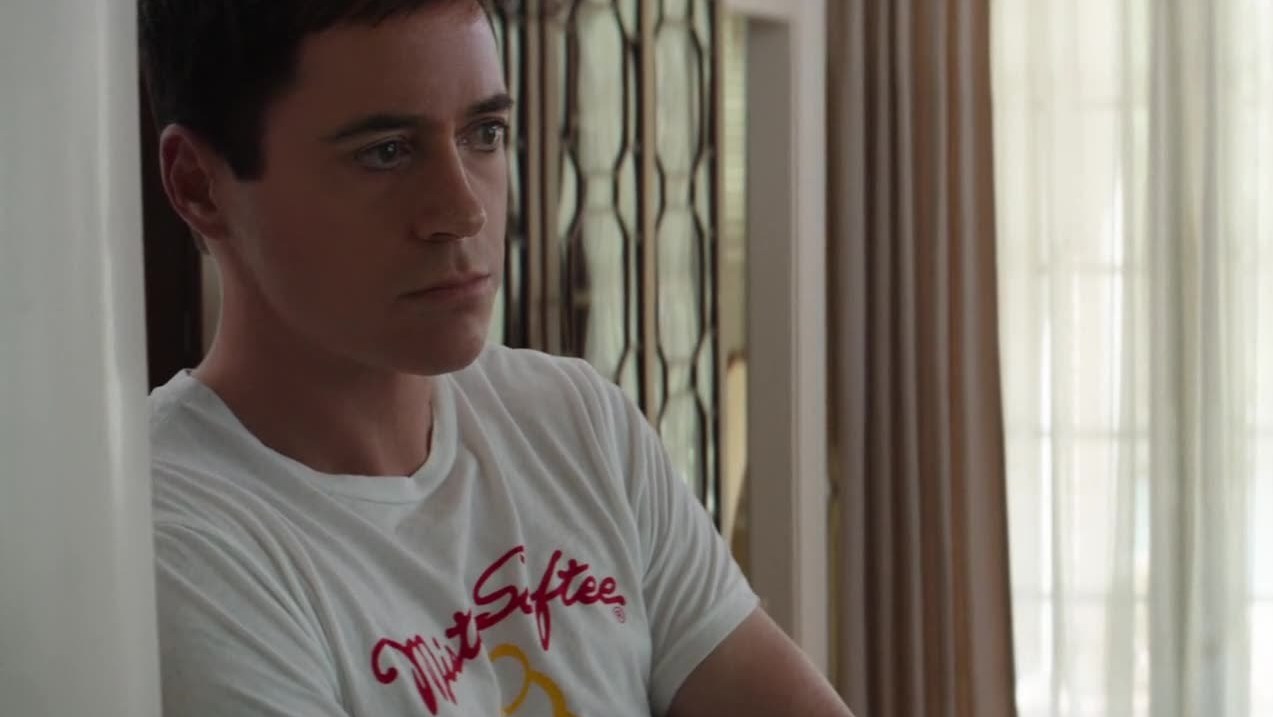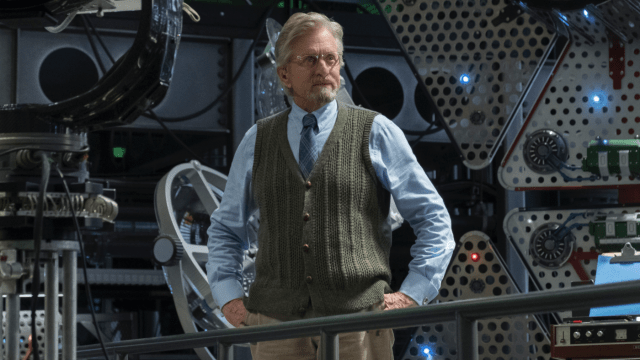Michael Douglas as Hank Pym in Ant-Man & The Wasp. Image: Marvel
Ant-Man & The Wasp is a visually-stunning film that toys with your senses in order to create a larger-than-life adventure befitting any Marvel blockbuster. But the film’s most impressive technical feat isn’t one of the flashy CGI-powered stunts you’ve seen in the trailers.
[Ed’s note: This article contains very slight spoilers for the upcoming movie.]

One of Marvel Studios’ party tricks to jazz up its films is to take well-known actors of a certain age and then make them play drastically-younger versions of their characters in important flashbacks. To make these scenes believable, VFX houses are tasked with de-ageing actors by digitally smoothing out wrinkles and the other ravages of time in order to create a composite image that looks like a living, flesh and blood person.
The first Ant-Man, Captain America: Civil War, and Guardians of the Galaxy Vol. 2 all made use of this filmmaking technique to bring back vintage versions of Michael Douglas, Robert Downey Jr., and Kurt Russell. Ant-Man & The Wasp continues the tradition for a number of important moments involving Michelle Pfeiffer’s Janet Van Dyne and Laurence Fishburne’s Bill Foster, but it really cannot be understated just how drastically improved the technology is in the movie.
In the scenes set in the past, it’s not just that the de-aged actors look organic and believable as they interact with non-CGI things, it’s that they look… like versions of the actors from slightly-different, alternate universes. When we talk about the uncanny valley, we’re talking about CGI characters who fail to look properly human and realistic despite their best attempts to appear so. The reason you probably didn’t like looking at The Polar Express is because the animators weren’t able to closely-enough approximate the subtle nuances of a human’s facial expressions or the fine details of their skin. (Coincidentally, this is also what makes sex robots creepy as hell.)
In Ant-Man & The Wasp, however, the valley of uncanniness is somewhat different and much more fascinating. It’s not so much that you don’t recognise the younger versions of the actors — you definitely do. Rather, there will come a moment in the theatre where you think to yourself: “Wait, I’ve been watching Fishburne and Pfeiffer act for years and that’s definitely not exactly what they looked like when they were around that age.”

A digitally de-aged Tony Stark in Captain America: Civil War. Image: Marvel
What’s interesting is that the deviations from the actors’ appearances doesn’t feel like an error of the animation team’s part. Instead, you get the distinct sense that the changes were purposeful and meant to create a version of them that more closely aligns with what the film imagines the characters themselves looking like, just back in the past.
A big part of what makes watching biopics so fun is seeing how makeup artists attempt to transform actors into facsimiles of real-world people. Depending on a film’s budget and how much an actor already resembles them, the results can range from fantastic to horrendous.
With technology like the sort that Marvel, LucasFilm, and the team working on Westworld are using, though, filmmakers are moving into a fascinating new space where it’s possible to effectively give an actor the equivalent of a near-unclockable facial reconstruction.
It’s uncanny to think that studios could begin to get into the habit of changing actors’ faces on screen more commonly–and it raises a number of important questions about just how far filmmakers can and should go with the technology. What, for example, would we think about a studio deciding to de-age a leading actress for reasons that had nothing to do with the movie’s plot? Similarly, what kinds of issues would be raised if, say, an actor of colour’s skin was visibly lightened in post-production?
These are the sorts of questions that come to mind when you realise just how good Marvel’s getting with this technique. Hopefully, in addition, the studio’s considering the implications themselves.
